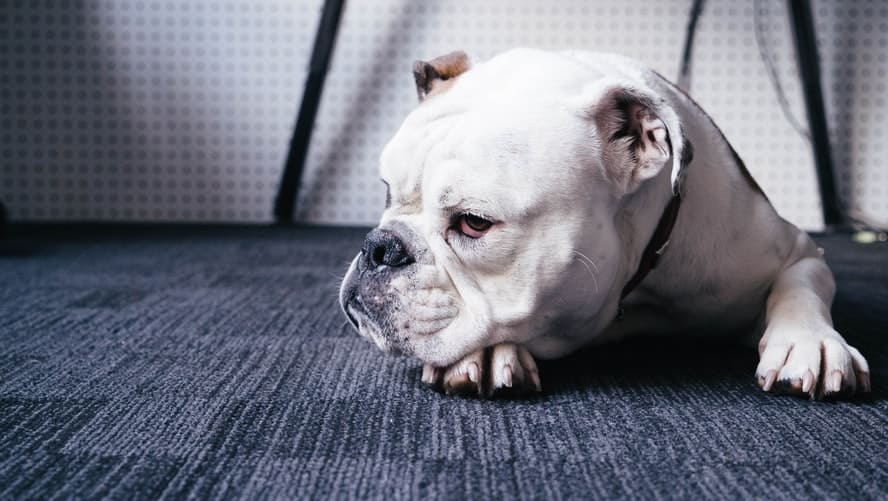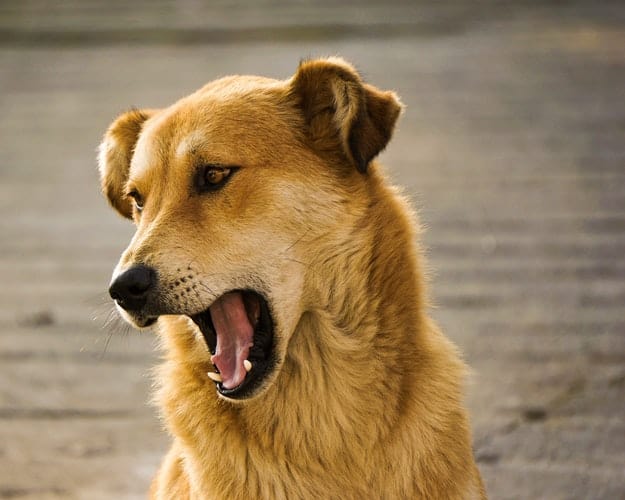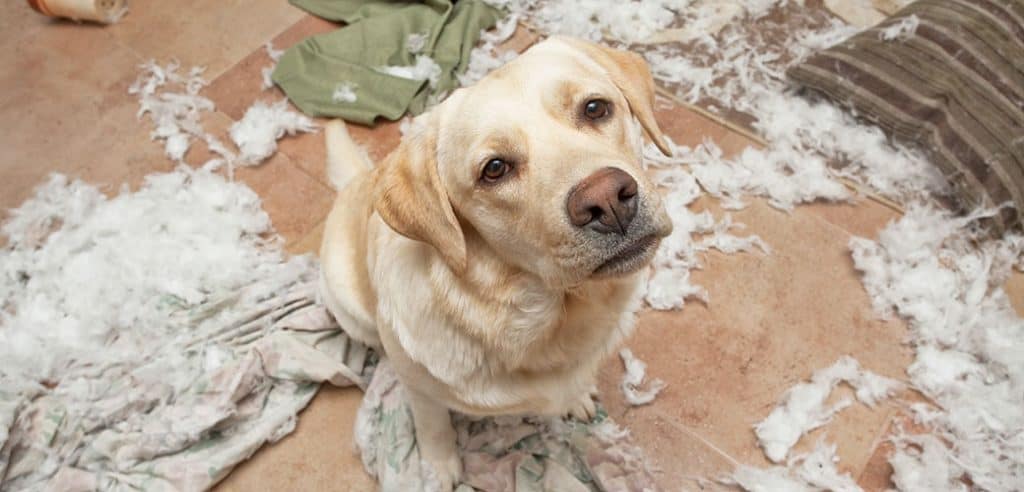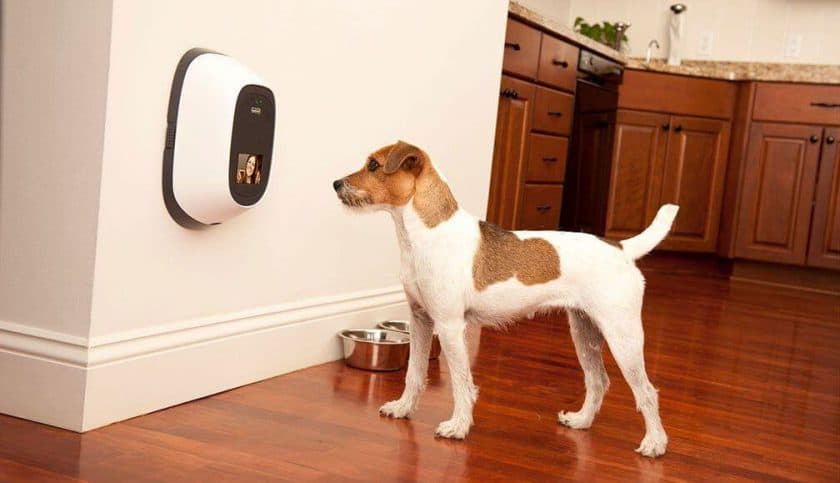Does your dog whine, bark or howl the moment it senses you are leaving his/her presence, even for a short while?
Or after coming from work you get a ghastly stink of dog urine and poop due to another inside the house “accident”?
Or you have lost yet another pair of shoes or cushions or any household item as victims to your dog’s chewing or shredding drive in your absence?
These may not always be the signs of a destructive dog that gets pleasure by destroying the house stuff or that of a dog punishing you for leaving them alone for a long time.
These may be the symptoms of separation anxiety in dogs, a disorder that affects dogs when they get hyper-attached to some person or thing.
Table of Contents
Separation Anxiety In Dogs
Separation anxiety in dogs is the anxiety and stress that arises from the separation of their attached person from their proximity for some time.
It is different from Isolation Distress that happens when the dog doesn’t want to be left alone and is happy with any company, like other family members, other dogs, and doesn’t pine for your presence always.
It is an emotional disorder that can happen at any age, puppy or adult, for a variety of reasons and differing for each dog.

Experts are still unclear about why dogs have this issue and how are some breeds more prone to it.
Many say that since past the dogs have been social animals and would roam in packs, staying alone at a place for a long time without their owner is harsh.
Owners are often the pack leaders to their dogs as they provide food and shelter like an actual pack leader.
Without their leader, the dogs don’t know how to react and therefore might experience separation anxiety.
It has now a major concern as in the past there was always somebody in the house and kept the dog company which nowadays isn’t feasible for all.

Many office goers and full-time workers are the most affected dog owners with many having to leave their dogs alone.
The growing awareness of this severe emotional disorder has resulted in proper diagnosis and treatment of the distressing pups with the help of willing and good owners.
Do You See These Symptoms In Your Pooch?
Here is the list of some dog anxiety symptoms:
Urinating and Defecating

Your dog urinates or defecates inside the house whenever you part from them for work.
This happens even though they have been house-trained and had adequate pee and potty breaks.
If this doesn’t occur when you are near then it may be a sign of the anxiety issue your dog is facing.
Howling and Barking

The dog may howl or bark continuously in the absence of the person they are attached to.
Their howling and barking may start a few minutes after being left alone and will either be continuous or resumed after short intervals.
They don’t bark or howl in the owner’s or person’s presence as much as when left alone.
Other than being a nuisance to your neighbors, it is also a sign of this problem.
Chewing and Destroying Items

Whenever the owner goes out even for a short time the pup ends up chewing or destroying some item either by shredding or chewing.
They might self-harm themselves by their actions by trying to chew harmful items that are around the house.
They are symptoms when the dogs only do it when they are alone and feeling anxious.
Escaping and Digging

If your canine friend is routinely trying to escape the house or crate when kept inside the house or digging up holes in the backyard, it could be an indicator.
The pup is actively trying to escape the place where he is held back and wants to be reunited with their owner and in doing so tries breaking out through windows or doors.
They most of the time get injured with the broken glass, wooden slivers or fences’ wires in their escaping and digging attempt.
If this happens during the owner’s absence only then it is a sign of separation anxiety.
Pacing

Some dogs when anxious pace around the house in straight and circular paths continuously.
They trot along the paths for a long time only when they are separated from their guardians or are left alone.
This is different from their natural walking routine and can also be confused with them prowling around.
Coprophagia
The dogs eat excrement in this medical issue either their own or some other dogs’.
It is only ruled as anxiety if they hardly do this in their owner’s presence and when they chose this over other options of eatables available.
Most dogs have this as a normal issue that may or may not be harmful to their health and should be discouraged if it affects them negatively.
Before taking these as signs for separation anxiety owners should consider taking their dogs to the vet and ruling out any medical problem.
Many dogs that have behavioral and medical issues also show the same signs.
What Are The Causes Of Separation Anxiety?
Change In The Family Structure

Dogs believe in “more the merrier” and are happy in a large and active household where they receive love.
The sudden death of a member or moving away from a member can sometimes have drastic effects on the dog’s mental health.
They might not understand the going-away and will wait for them with the anxiety shooting up during this time.
Change Of Living Area
Whenever you shift your dog experiences a full spectrum of emotions that range from curiosity and happiness to anxiety and panic.
Unfamiliar surroundings with new unknown places can sometimes make dogs feel vulnerable as they don’t feel safe there.

Being at a strange new house can also be a cause of separation anxiety in dogs.
Change In The Schedule Of Family Members

Many dogs don’t like the change of schedule of their family members especially if that involves them staying out for long.
This sudden change in the schedule can be upsetting to them with many being anxious.
Unless they have to be trained to cope up with abrupt routine changes they don’t know how to deal with them.
This is by far the most common reason for Separation Anxiety In Dogs, especially when the dog mom or dad changes his/her schedule.
Change In The Family

Some dogs have many re-homing experiences for a variety of reasons.
When they have been abandoned and adopted a number of times they tend to have anxiety issues.
They might have settled in that family before being sent to shelters and that isn’t easy for any dog’s mental wellbeing.
These changes can make dogs uneasy and unless cared for, these situations can cause or escalate anxiety in them.
Rule Out These Problems Before Concluding As Separation Anxiety

These issues should be eliminated from the checklist before jumping to any conclusion.
- Soiling of the house can be due to weak bladder control, a urinary tract infection or a medical condition. In those cases, the owners should address the issues differently and have them checked by vets.
- Poorly house trained dogs also can eliminate inside the house. This is mostly due to the confusion in their minds as to what action is good and what is bad. In this case, the owners should re-train them with different approaches to ensure the success of the training.
- Barking and howling also happen when dogs are triggered by outside elements. Sirens wailing, stray dog barking even neighbors vacuuming can be a trigger for some dogs to start barking. They bark even in their owner’s presence and to stop need a distraction-free environment.
- Destructive chewing can also happen when they are bored and need some physical stimulation. When they have no toys or things to chew they can chew up anything that lies ahead of them. The owner’s presence isn’t a factor in this type of behavior. They require behavioral training to make them stop with some outlets to relieve their boredom.
- Dogs on medications can also have loose bladder movements as the side effects of the drugs. They only pee and poop inside the house during the medication course and stop as soon.
- They sometimes urinate when either excited or intimidated. This again depends on their behavior and needs attention from both specialists and the owners
- It can also happen when they are territory marking. Dogs are very territorial animals and thus they mark to stop unwanted dogs from entering their area. Urine marking happens during a period of time with or without the owner being there.
10 Ways To Cure Separation Anxiety
There are many ways to help reduce and cure this problem in your dogs:
1. Training Them To Be Alone

The most important thing is making your dog less anxious and stressed out whenever you leave them.
You can start by leaving them in a room and briefly exiting for a short while.
The moment they show they are anxious, come back to them and give them a treat.
Don’t be far away from them, just out of sight but close enough to take care of them when they start panicking.
Pick your keys or wear your coat then sit down on the sofa and don’t leave the house for a while.
Make them believe they are playing a “stay game” and after they have calmed down leave until they get used to your absence.
When they get less anxious, slightly increase the duration of leaving them time.
The increase should not be more than 5 seconds at a time and when they can tolerate at least 40 minutes of being alone, increase by 5-10 minutes.
This should be done every day for several weeks as building patience and assurance takes time.
Always reward them if they were calm and relaxed when you left them alone.

In case of them being fussy and panicking, wait for them to calm down then tend to them.
Tip: Always start training from the time period at which they start feeling uncomfortable.
2. Change The Way Of Leaving
Your dog picks up the signs of your leaving very quickly and gets pre-departure anxiety due to that.
Don’t let them learn your routine by using different exits, changing the leaving time, or wearing different clothes.
Sometimes leave early and sit in the car for a while and watch their reaction.
Till they complete their training continue doing this as they can’t tell your departure signs thus lessening their anxiety.
3. Downplay Coming Back

Resist the urge to hold them and cuddle them the moment you step inside the house after coming back.
When you do that they believe that you’re sorry for leaving them and it undoes all the training.
After coming back only hold and pay attention to them when they have calmed down.
When they see this is a normal routine they feel less anxious and are assured of your coming back.
4. Make Alone Time A Fun Time

Give them mental stimulation in their alone time so they can’t think about your absence much.
Interactive toys and puzzle toys are the best for this.
They can either be store brought or homemade and that should engage them for a long time.
They provide them a way out of the boredom and sometimes have a calming effect on them.
Many dogs love these trick creations and are happy to spend hours playing with these.
Leave them some tasty treats that they only get while they are alone so they have something to look forward to.
5. Tire Them Out

Going to work take them out for a walk or a rigorous play session that tires them out.
When they are tired out, they will spend most of their alone time sleeping.
After coming back from the morning session of exercise, feed them well as well as providing them food and water for later.
They need 12-14 hours of sleep on an average especially after they have spent their energy.
This is a good way to curb Separation Anxiety In Dogs.

Keep some toys out for them so after waking up they can spend the remaining time playing instead of getting bored.
6. Create Their Own Doggy Space

Make them their own personal space that acts as their retreat and comfort place.
It should be located far from distractions and should have plenty of light and air ventilation.
It can be any corner of the house and they should have everything according to their needs there.
Train them to sleep and play there when you leave.
Keep their toys and food in that space so they play and relax there.
You can also leave some of your recently worn clothes in there for them.
7. Give Them Crate Training

Crate training is believed by many to be effective as it gives dogs a sense of security and comfort.
When buying a crate see whether the dog has enough space to roam around and lie down comfortably.
Train your dog to spend time inside the crate by feeding them there and by obedience training.
Place the crate where your dog can see around the house and has good light and ventilation.
Leave their food and water inside with a soft material to relax on and toys to play with.
Don’t leave them in the crate for too long as it can affect their bones and muscles due to lying down continuously.
This is one of the best technique to curb Separation Anxiety In Dogs.
8. Give Them Medications

There is a large variety of dog anxiety medication available in the market that pacifies them.
They are different from human medicines as some ingredients toxic to dog’s health may be present in them.
They either increase serotonin levels in them or are sedatives that calm them down.
These should only be taken on vet’s prescriptions as medicines can have different effects on the dogs.
They only act temporarily with the owner is still required to train them on being calm during their solitary time.
9. Use Dog Separation Anxiety Treatments And Alternatives
This includes natural and homeopathic treatments like feeding them natural supplements that work on the mind.
Dog anxiety vest and wrap are also useful in this regard.

They are lightweight, affordable and come in different dog sizes to increase their comfort level.
They work on the pressure points of their bodies and produce a hugging sensation for them.
It calms their nerves and causes them to relax and be peaceful.
10. Invest In Dog Camera

These handy devices help you keep a watch on your dogs from the office and reduce Separation Anxiety In Dogs.
They allow two-way interactions between the owners and the pets so pets don’t feel alone.
Owners can talk to them in real time, check on them and even give them treats through these.
Talking and seeing their owner on a screen significantly changes their mood and lowers their stress level.
Thus they don’t feel lonely even in the empty house and stay content for the rest of the time.
These are some ways in how to combat it with some owners even taking services of Canine Behavioral Specialists.
Before seeking help from such professionals check for their certifications to ensure full treatment of your dogs.
There are some dog breeds that can be left alone at a stretch like Basset Hound, French Bulldog, etc.
Labrador, German Shepherd are some of the dog breeds with separation anxiety as one of their emotional and mental health issues.
These were some methods and tips on dealing with reducing Separation Anxiety In Dogs.
In case you would like to add anything or ask any doubts, feel free to comment below.
Happy petting to you!













I liked the article!
[…] the best companion dogs over 2000 years and are highly affectionate, which makes them vulnerable to separation anxiety which requires someone to be present majority of the […]
[…] Separation anxiety, dogs that are highly affectionate are vulnerable to this disorder that affects the dog that’s hyper attached to his owner and gets super stressed when left alone. […]
[…] 10 ways to cure separation anxiety […]
[…] predisposition toward this behavior when in situations of anxiety or conflict. A dog suffering from separation anxiety chases his tail similar to a nervous person who bites his […]
[…] case Vizslas do exhibit barking or howling cold or rainy climates it will often be because of separation anxiety, which is common in this […]
[…] about them. But the downside to this aspect of the Weimaraner temperament is the high incidence of separation anxiety in the […]
[…] reasons for barking can be protection, alarm, fear, boredom, attention-seeking, greeting, separation anxiety, compulsive […]
[…] Separation anxiety, compared to most other breeds, Newfoundlands need a great deal of companionship and do not like being left alone for more than a few hours. […]
[…] get bored staying alone in the house, and this often leads to separation anxiety, it is a situation that arises from the separation of their attached person from their nearness for […]
[…] dog treats are a solution to your dog’s separation anxiety. They are not medicinal in nature but can alleviate your dog’s […]
[…] overcome mild separation anxiety: When your dog is undergoing separation anxiety, he paces, howls uncontrollably, and whines. Presenting your dog a puzzle at this juncture can […]